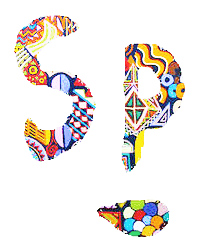Restorative Injection
- Stephen Hornsby-Smith

- May 29, 2020
- 3 min read

Can painting be a restorative injection of relieving the angst of modern global society and a rediscovery of balance by submission to the imperfection of life?
Paint really can be an indicator of re-energising art without dictating outcome, or imposition of prescriptive demands. A contemporary painter can circumnavigate traditional slavery to technique and dictatorship of form, whilst absorbing discipline and respect by self-training, either as self-taught or schooled in art colleges. Nevertheless, in order to balance and reset argument and transcend pre-conceived notions about 21st century painting, the painter must understand key concepts of 'miyabi', 'wabi-sabi' and 'ma' to make painting universal. Such human restitutive enlightenment must symbiotically embrace the 'life force' of nature in which humanity is imperfect and where life is often painful. But the dignity of modest but unalloyed reverence of it must overwhelm yet appeal to the simplicity of natural aesthetic intelligence to extend balance and social coordination, called 'miyabi'.
I believe that nature and the very best of simple uncluttered needs to understand by contemplative self-exploration has to be alongside our natural environment to open up the 'man-made' imposition of form that has degenerated and derailed painting from its celebration of the imperfect. Since ancient Japan (pre-1860) wabi-sabi is practised as the emerging acknowledgement of the 'failure of material life' to satisfy the human condition restricting and limiting true spiritual space to evolve and grow and not squander any chance of 'ma' (the celebrating of the space between life and social and economic rigour). True cultural refinement and aesthetic excellence (miyabi) can be an aspiration by imperfection and simplicity that nurtures, grows and evolves throughout human relationship with nature, where Wabi-sabi occupies and encounters a humbling process of self-atonement by embracing imperfection and mortality, of the temporal and the finite.
This very celebration of the finite and limited human experience provides us with the emergence of contemporary occidental painting intersectiving and being anthropologically elevated by these Japanese ideas of the ephemeral and the alchemy of the temporal and the tainted reversed from the hitherto form limitations and finite physical boundaries in both shape, size and 2-dimensionality in the west into its most valuable asset by celebrating human 'culpability' and transforming and promoting the virtues of imperfection and human vulnerability. What a triumph over adversity! Suddenly painting becomes a pioneer of anthropological confluence and a currency of nature. The science of speculation and acceptance not dogma has emerged in harmonious re-engagement based upon the tides and seasons of nature. The King Canutes of the fashionable art circle will have to co-exist and not redact the medium of paint and nature.The spiritual respiratory of man is both his flawed and inconsistent nature that can paradoxically resurrect him.
Simplicity and space and uncluttered re-balancing of priorities paint a new life of unburdening human distortion. Modesty, both ancient and contemporary, by understanding the contemplative Japanese woodcuts, prints, ancient painted scrolls and calligraphy all impact on the western life and course through the painting veins of human capacity to expose the inauthentic in the unenduring, the 21st century re-calibration of our mortal coil within nature's open expanses through modesty and humility. This is our human detox and 'fanatic free zone' and respect of our re-generator of our new human understanding of our limitations and our context in nature. Simple confines of the physical boundaries of paint or board are no longer 'holding us up but focusing us in'. Perfect/defect is no longer a binary dictat but a reference to learn from. This decluttering and rejection of a 'hoarder society' is open as a self-build displacing 'virtual concrete' for natural sources and resolved by the life force of human dignity in respecting human frailty and self-deception. Painting's self-worth has been restored by values of shared conviction not 'big deal' flash headlines, practical respect of nature's colour spectrum re-acquaint the painter that's extracted from largely nature's plants, wood and rock for board or canvas. Deviation is not experimental! Square up to the truth of human folly and the frail indulgent natures. It is the ancient of faiths and trusting of nature that works with nature's grain and not mankind's. Painters are no longer imprisoned by form; form is imprisoned by form. Paint is no longer locked-up, even in these unprecedented times of lock down! The burgeoning popular expression of paint by mass practitioning of painting in the UK must embrace nature before it is submerged into the cult of art by aficionados blown-up with self-regard. The warning signs are there; don't fail the hardest test for any painter: the laws of saleability and promotability! Just walk away and let nature take its course and then can we clear our heads to confront our Westernism, Capitalism and Democracy.









Comments